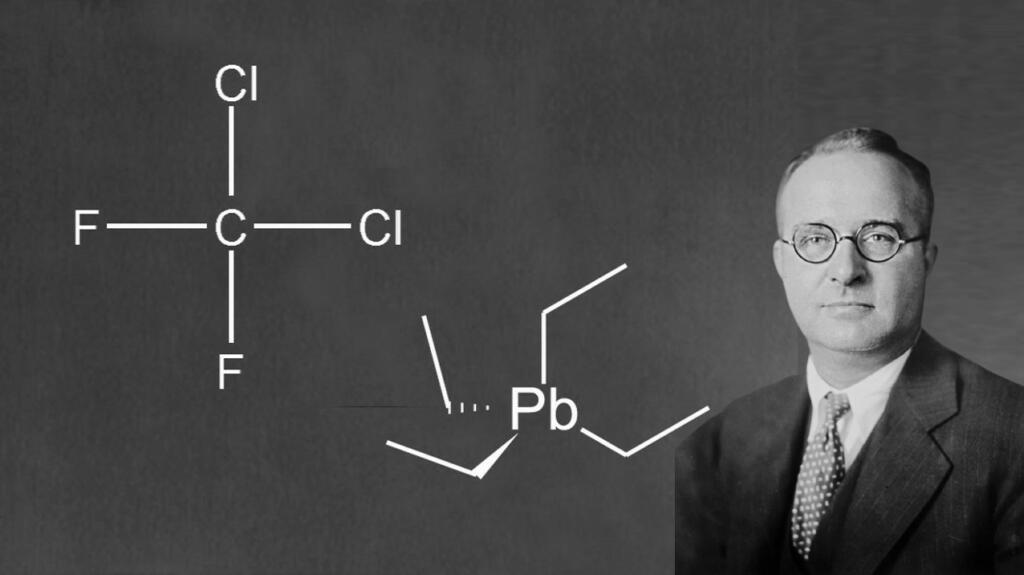If there is any scientist in the world that has caused generations to suffer by damaging the Earth’s environment then it has to be America’s not-so-brilliant inventor named Thomas Midgley Jr. Born on May 18, 1889, in Beaver Falls, Pennsylvania, Thomas is credited with inventing the deadly leaded gasoline that was sold across as chemical antiknock agent for automobiles and chlorofluorocarbons (CFCs) as a refrigerating agent.
Both these inventions have caused tremendous damage to human health and the health of our planet. Even after more than 70 years after his death, Thomas Midgley Jr. and his destructive inventions continue to be anathema to the human populace.
In the early 1900s, automobiles often suffered from a problem called engine knocking, which is when fuel burns unevenly in the engine’s cylinders of an automobile causing noise and potential damage to the engine’s cylinder walls and pistons.
Inventing lead gasoline for automobiles
Thomas Midgley Jr. was then part of Charles Kettering, the inventor of the electric starter and his team at General Motors. Kettering asked Thomas to find a petrol additive that would make car engines run more smoothly. A 27-yeard old Thomas quickly got down to business and started testing hundreds of chemicals and substances to find a viable solution to the problem.
Eventually, he came up with the idea of adding tetraethyl lead (TEL) to gasoline –despite lead being known as a toxic chemical. In February 1920, Midgley filed a patent application for a mixture of alcohol and gasoline as an anti-knock fuel. It is pertinent to note that even during this time, it was well established that Lead was a poisonous substance. Documented evidence from ancient Rome suggested that lead could cause insanity and even death.
It will make us rich – Thomas Midgley Jr. on selling the death product
However, both Kettering and Thomas Midgley Jr. were far too elated by the prospect of filling the coffers that they enthusiastically started promoting the health-hazard product. From General Motors’ perspective, TEL was cheap to produce and its use for this purpose could be patented, generating the potential for enormous profits.
During a phone call with Kettering, Thomas was heard saying, “Can you imagine how much money we’re going to make with this? We’re going to make 200 million dollars, maybe even more,”. This particular phone call was made when Thomas Midgley Jr. was recovering from lead poisoning after demonstrating it was totally safe by inhaling leaded gas for 60 seconds.
The word “lead” was never used in any advertising or promotional material so as not to alarm the public. In 1923 The first leaded gasoline was sold in Dayton, Ohio under the brand name “Ethyl”. It was only in 1996 under the U.S. Clean Air Act that the sale of leaded gasoline was banned. However, the damage had long been done by then.
The American population had been exposed to leaded fuel for far too long. Due to the exposure to this toxic element, the mental development of the young had been severely affected. This later led to an increase in crime rates across the country along with a rise in teen pregnancy.
Chlorofluorocarbon – another abomination of an invention from Thomas
After gifting the world with his abomination of an invention, Thomas Midgley Jr. set his eyes on solving yet another technological problem of the age. Refrigerators in the 1920s were often extremely risky because they used dangerous gases that sometimes leaked. Thus, Thomas set out to create a gas that was stable, non-flammable, non-corrosive and safe to breathe.
Like a moth to a flame, Thomas attracted himself to another disastrous idea within three days of setting out to find a solution. He devised the use of dichlorodifluoromethane, a chlorofluorocarbon, or CFC, commercially known as freon to be used as a refrigerant gas in residential refrigerators and air conditioners.
As usual, the money-hungry corporations immediately latched onto Midgley’s invention and dichlorodifluoromethane was manufactured as Freon-12 by Kinetic Chemicals. Midgley was hailed as a hero and was awarded the prestigious Priestley Medal in 1941. He was also appointed president of the American Chemical Society.
To demonstrate the CFC gas was safe he inhaled a large amount of the gas and blew out a candle flame to show it was non-toxic and non-flammable, therefore, safe. However, the use of CFC would later cause irreparable and severe damage to Earth’s ozone layer — the region of the upper atmosphere that protects life on the planet from UV radiation and other forms of radiation.
Damage which the planet is still recovering from.
Karma comes for Thomas
In the end, it was kind of karmic that Thomas Midgley Jr. died due to a device he invented to help hoist himself up when suffering body paralysis due to Polio. Normally, polio affects only children under five years of age. The disease left Midgley disabled and in need of constant help. He then invented a pulley system to help himself get out of bed without any help.
On November 2, 1944, he died of asphyxiation at the age of 55 after his own deadly invention strangled him to death when it entangled itself around his neck. Of the 117 inventions that Thomas Midgley Jr. had the patent to his name, it will be the aforementioned two inventions that will continue to haunt his name and legacy. And perhaps rightly so. Thomas knew the perils of his inventions and yet put humankind in jeopardy, all because he wanted accolades and a little green in his bank account.
